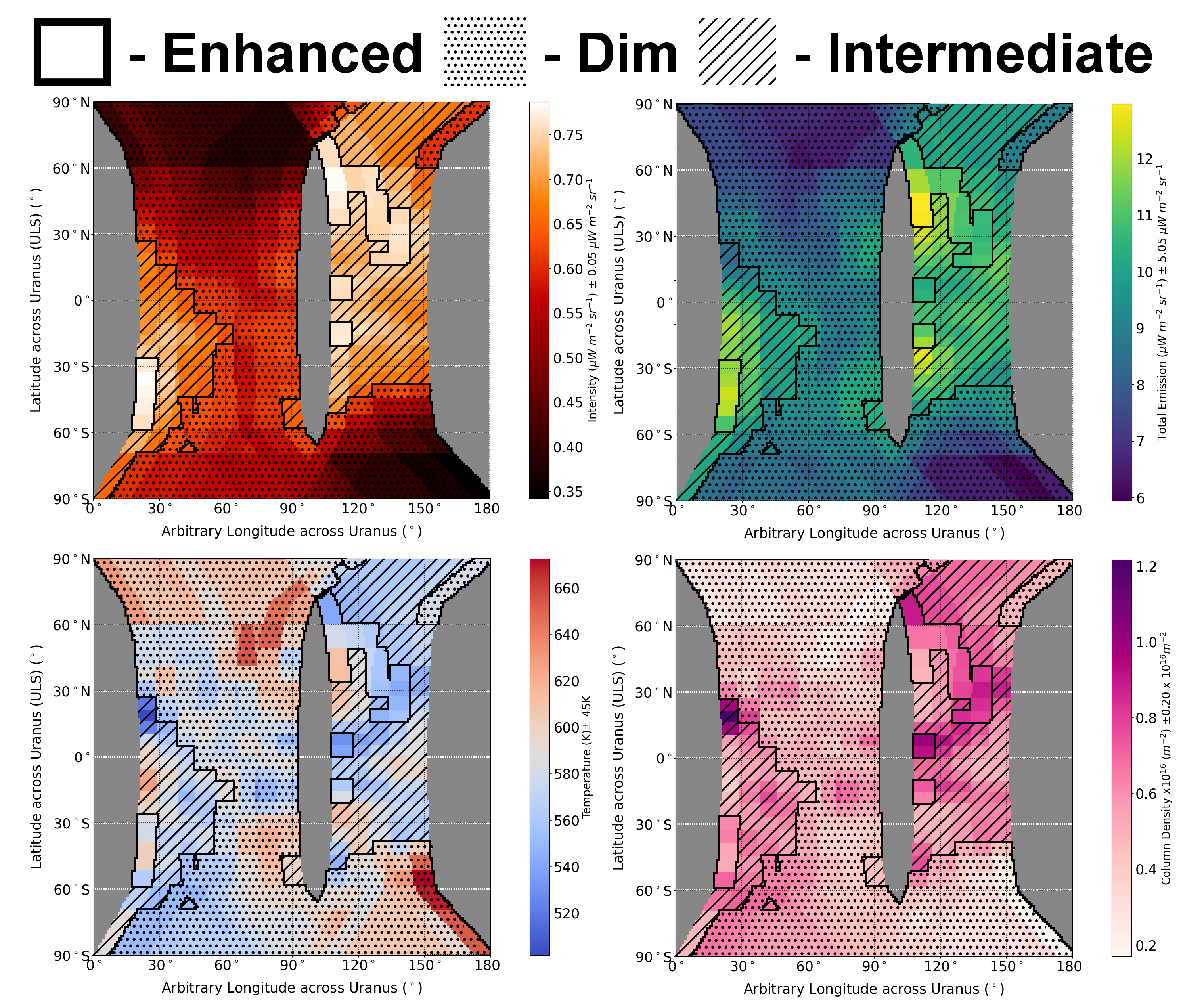MIST
Magnetosphere, Ionosphere and Solar-Terrestrial
Detection of the northern infrared aurora at Uranus using the W.M. Keck II Telescope and NIRSPEC instrument
By Emma Thomas (University of Leicester)
Three decades of searching for the infrared aurorae finally come to a successful conclusion as portions of the northern (IAU southern) aurorae have been confirmed at Uranus. The icy planet represents an enigma within our solar system, with the first and only visit by Voyager II in 1986, it remains one of the least documented planets in our solar system. This is exceptionally apparent with the planet’s history of auroral observations, where the UV aurorae have been observed a handful of times but no infrared (IR) counterpart has been confirmed, despite both aurorae appearing at Jupiter and Saturn. Analysis of IR aurorae at both Jupiter and Saturn have challenged what we know about magnetosphere-ionosphere coupling, highlighting a need for IR analysis at Uranus to uncover its mysteries. Since 2020 our team has meticulously analysed archived data of Uranus during 2006 from the Keck II telescope on Mauna Kea in Hawai’i. The timing of these observations was key, close to equinox, as it provided an optimal view of the predicted locations of the northern and southern aurorae. By examining the emission lines from these aurorae (the emitting ion being H3+) between 3.94 to 4.01 μm, we carried out a full spectrum best fit across 5 fundamental lines for each spatial pixel across the planet’s disk. By comparing these lines at specific locations, we were able to identify an average 88% increase in column ion densities with no significant temperature changes localised close to or at expected auroral locations for the northern aurora. With this confirmation at Uranus, we look forward to a new age of auroral investigations at both ice giant planets.

References:
Thomas, E.M., Melin, H., Stallard, T.S. et al. Detection of the infrared aurora at Uranus with Keck-NIRSPEC. Nat Astron (2023). https://doi.org/10.1038/s41550-023-02096-5